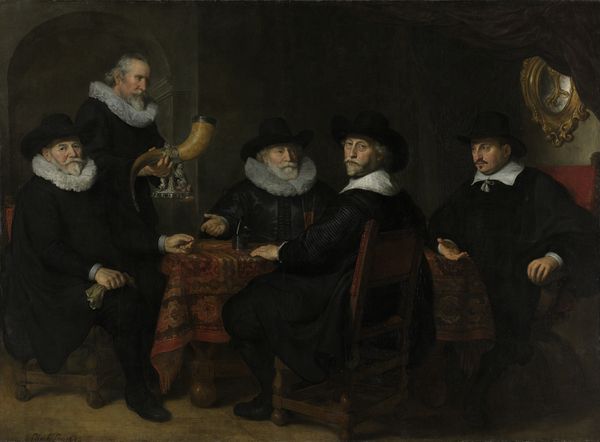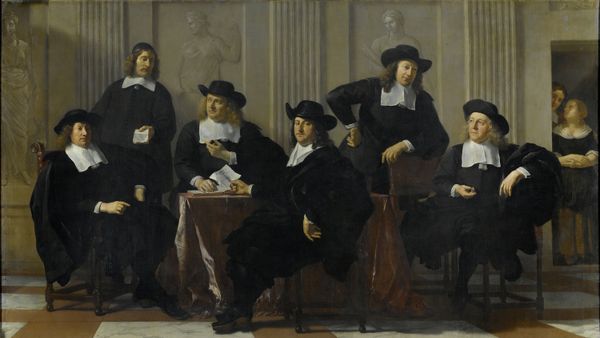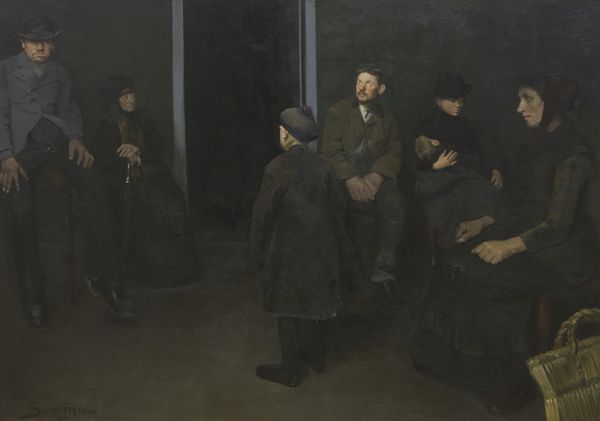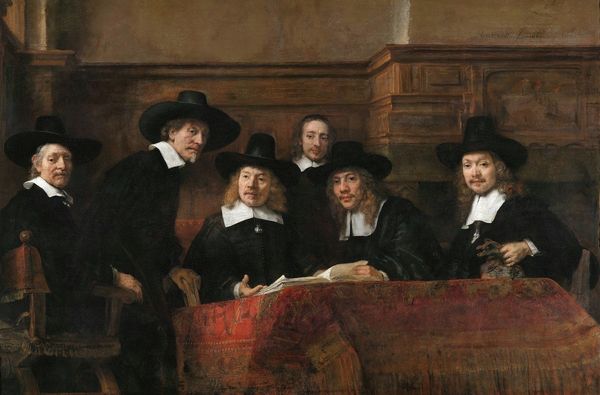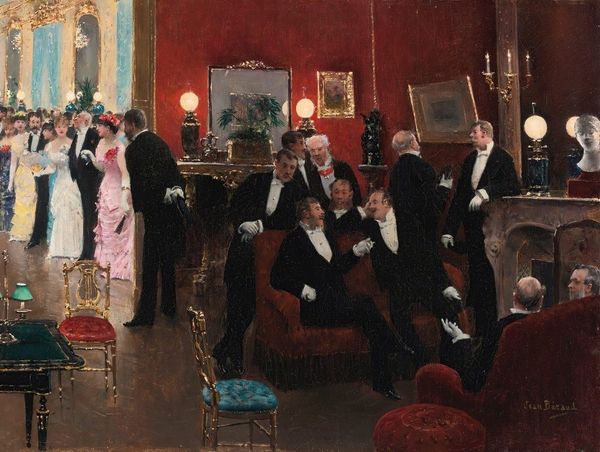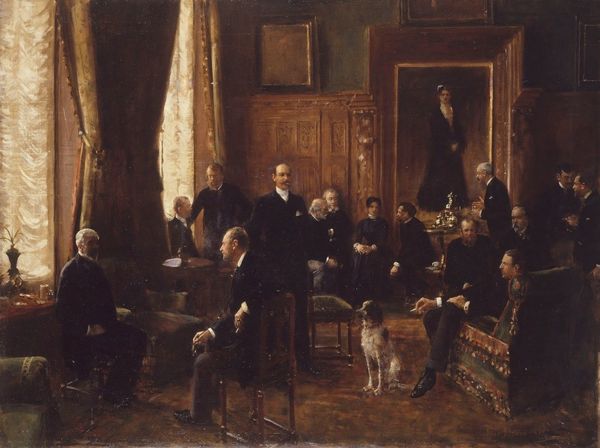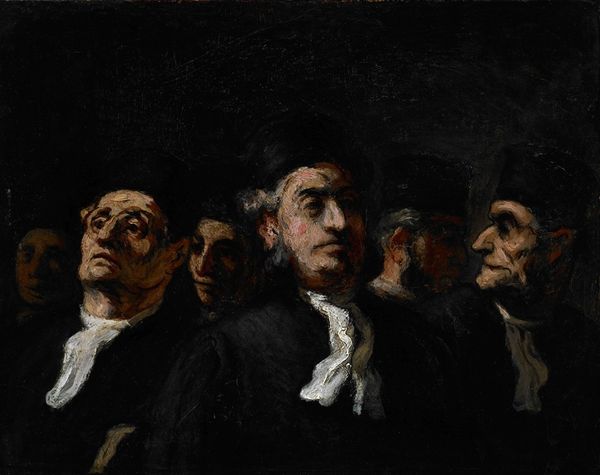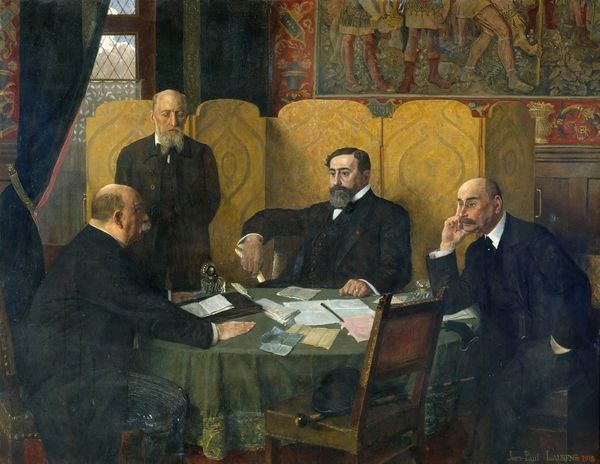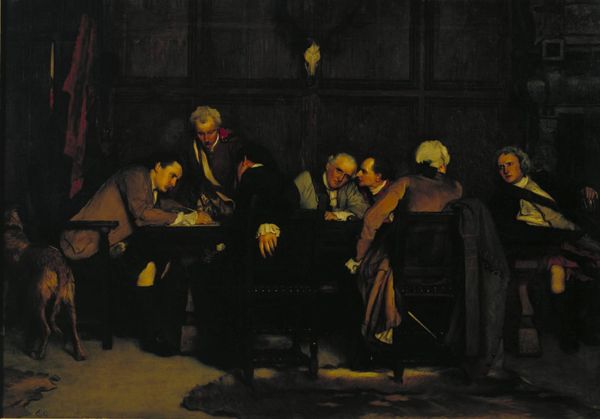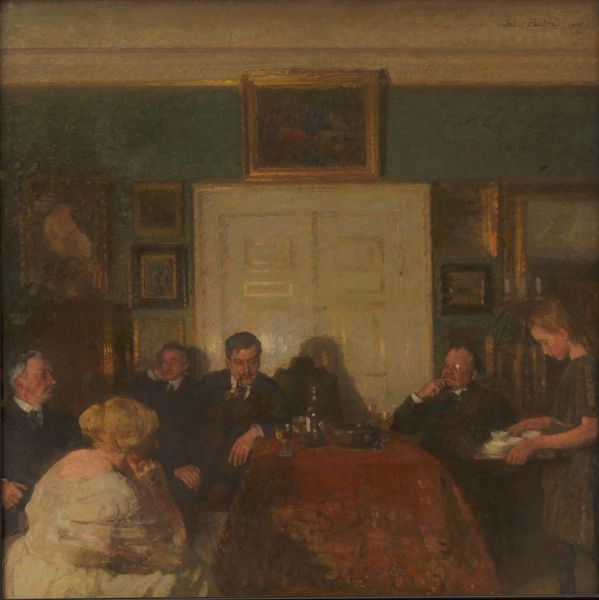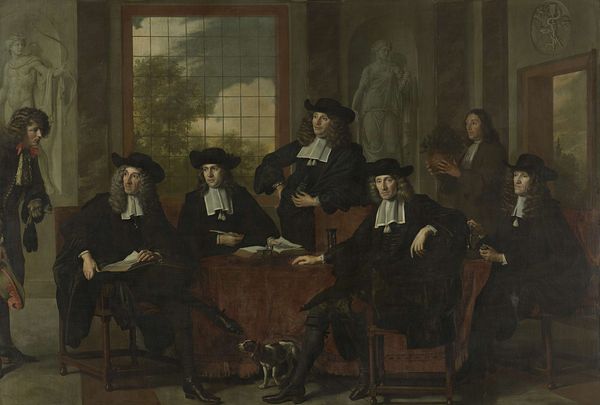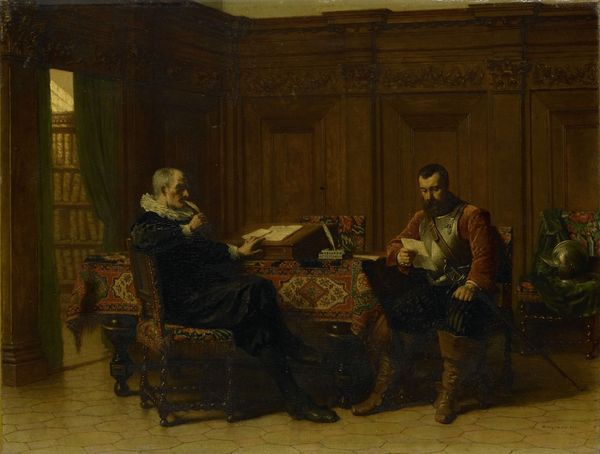
painting, oil-paint
#
portrait
#
baroque
#
painting
#
oil-paint
#
group-portraits
#
genre-painting
Copyright: Public domain
Editor: Here we have Ferdinand Bol’s “Four Governors of the Amsterdam Leper Asylum,” painted in 1649. The men seem almost huddled together, and the somber color palette definitely lends the piece a serious tone. I’m curious about this setting. What's your take on it? Curator: Well, beyond the formal arrangement characteristic of group portraits, particularly of this period, this painting serves as a fascinating visual document of institutional power and social responsibility in 17th-century Amsterdam. We're seeing more than just likenesses. We’re viewing an officially commissioned representation of civic duty. Editor: Commissioned, you say? By whom, exactly? Curator: By the governors themselves, or rather, by the board of the Leper Asylum. The act of commissioning such a portrait served to solidify their authority and project an image of benevolence. It visually reinforces their role as providers and protectors of the vulnerable. How do you think its placement would affect viewers? Editor: Well, seeing this hung in a public space would reinforce a sense of order, charity, perhaps even subtly discourage dissent. Almost like a visual form of governance. It would communicate that things were under control, wouldn't you agree? Curator: Precisely. And consider the stylistic choices – the darkness contrasting with their white collars. The gaze directs toward the viewer, almost as a visual demonstration of authority and perhaps also, as a request for respect, demonstrating how art plays a critical role in upholding institutional ideologies. Editor: That makes me reconsider my initial read of it as simply “somber.” It is clearly carefully crafted for its intended audience! Thanks for shifting my perspective on this piece! Curator: And thank you for raising excellent points, together, we've unearthed interesting perspectives.
Comments
No comments
Be the first to comment and join the conversation on the ultimate creative platform.

